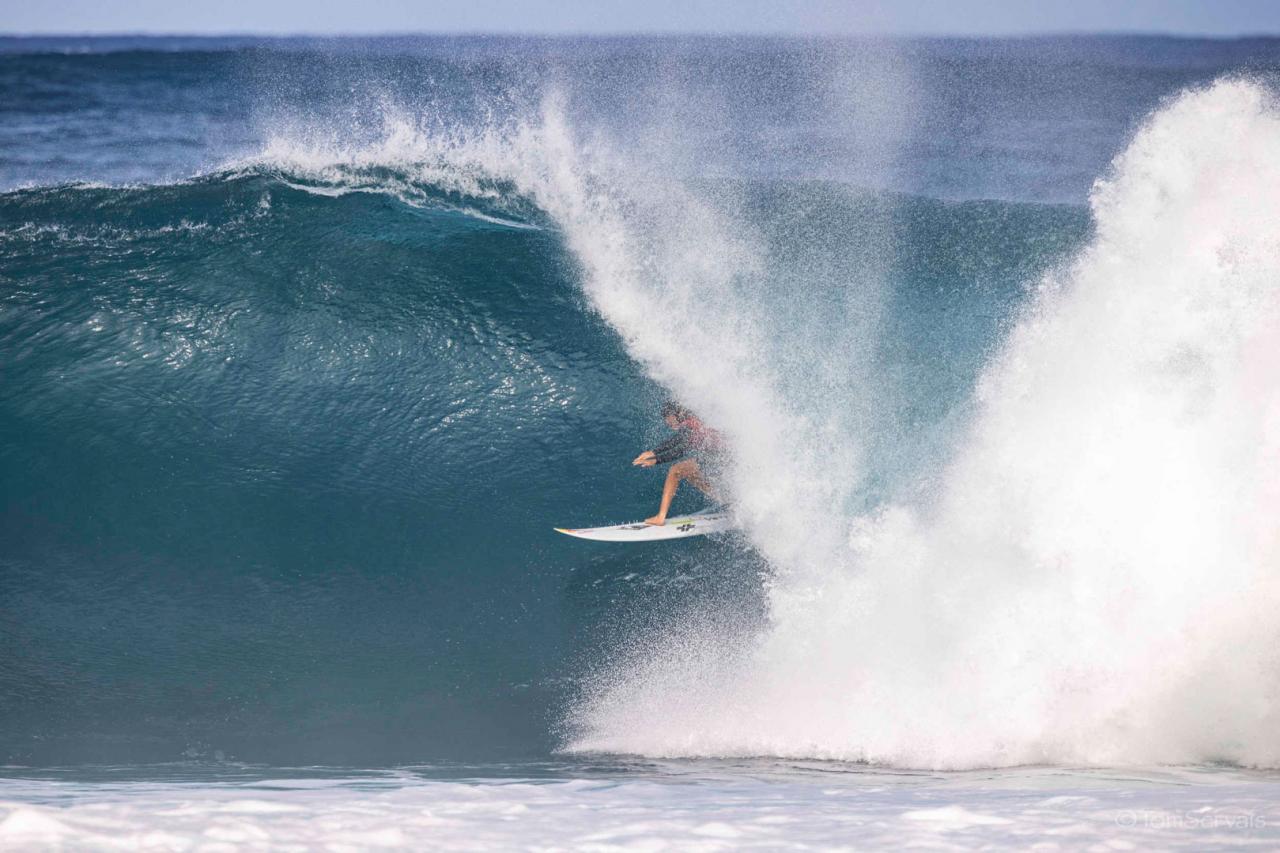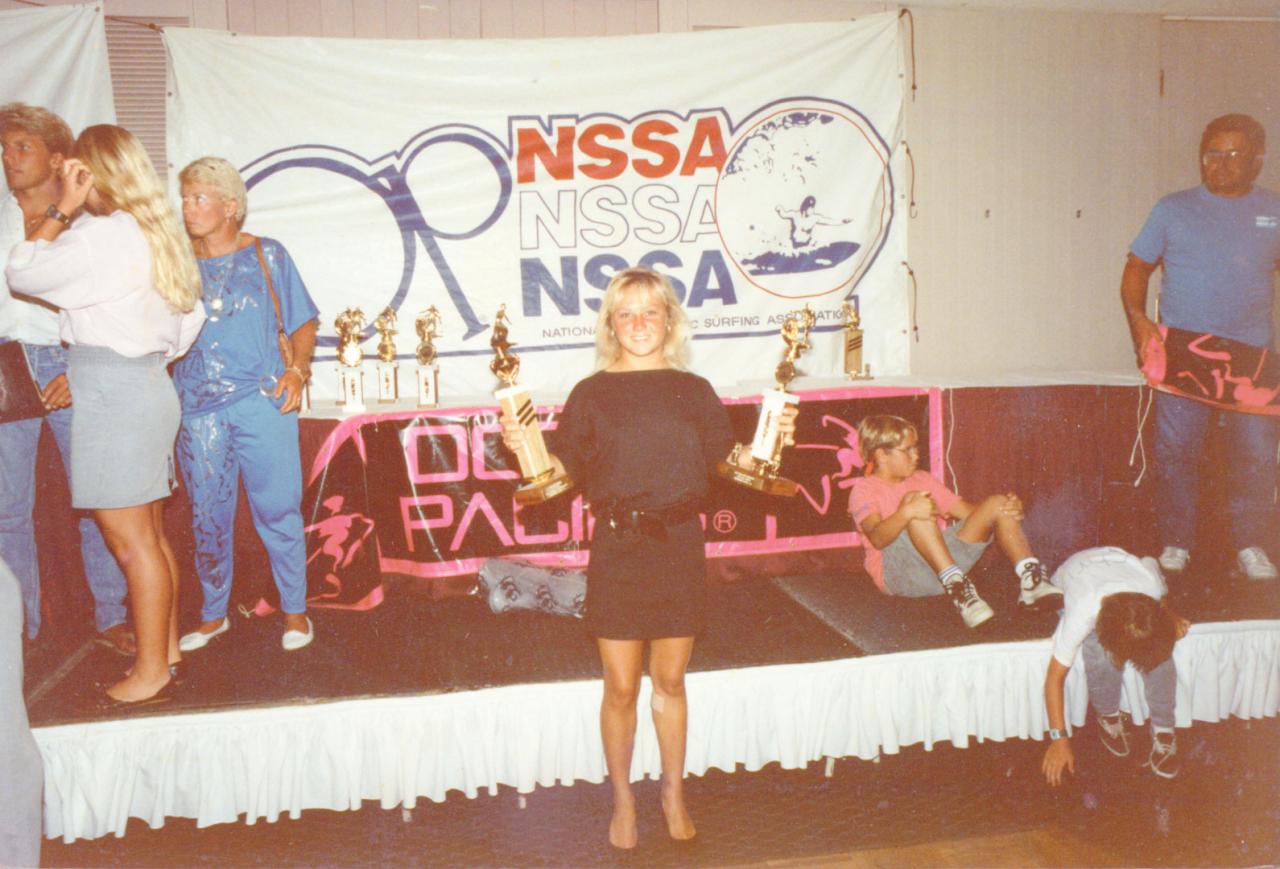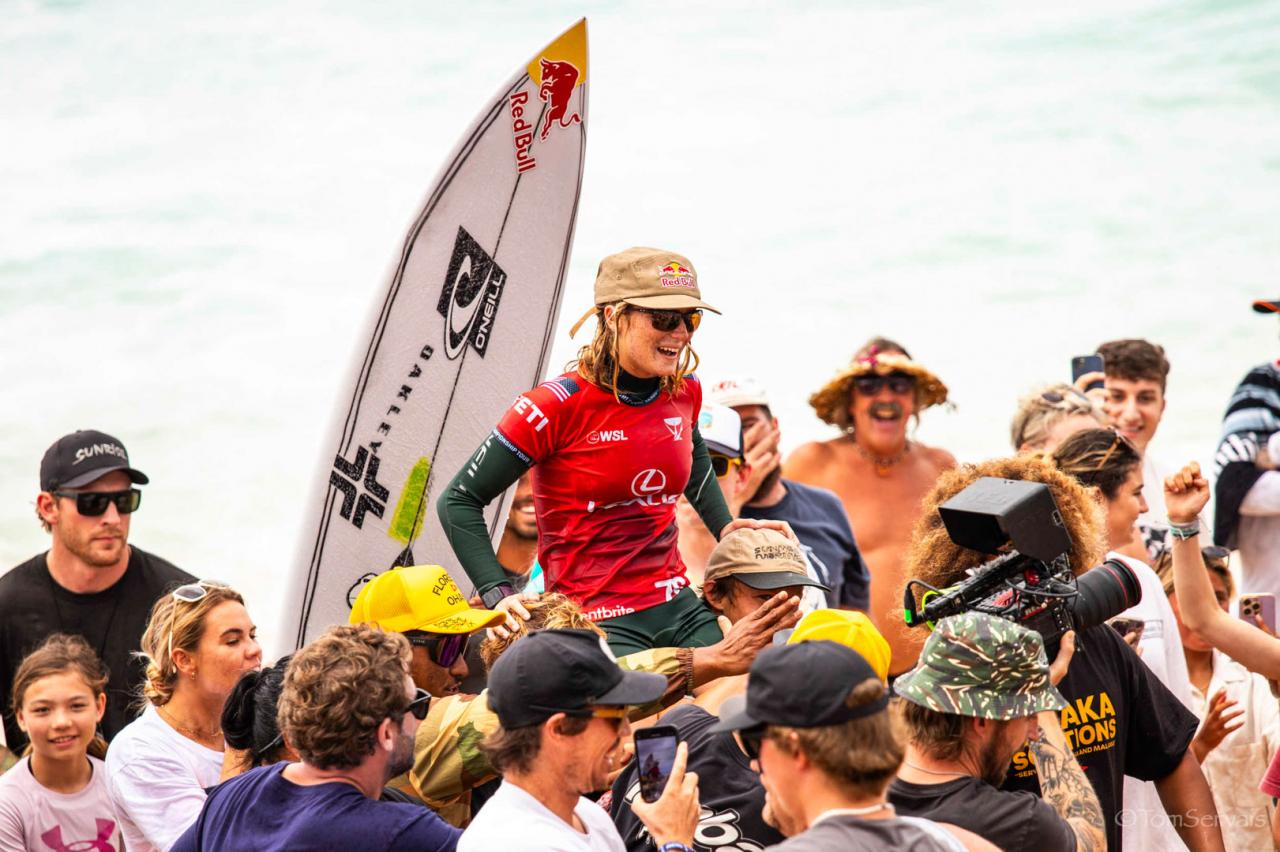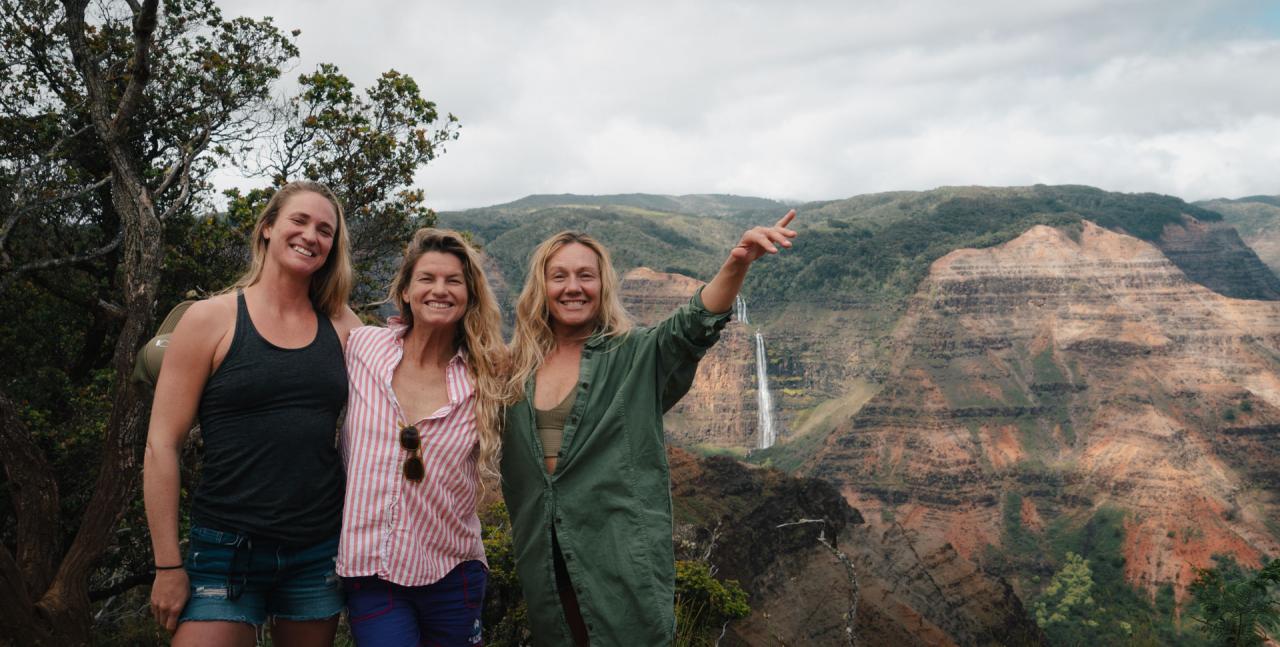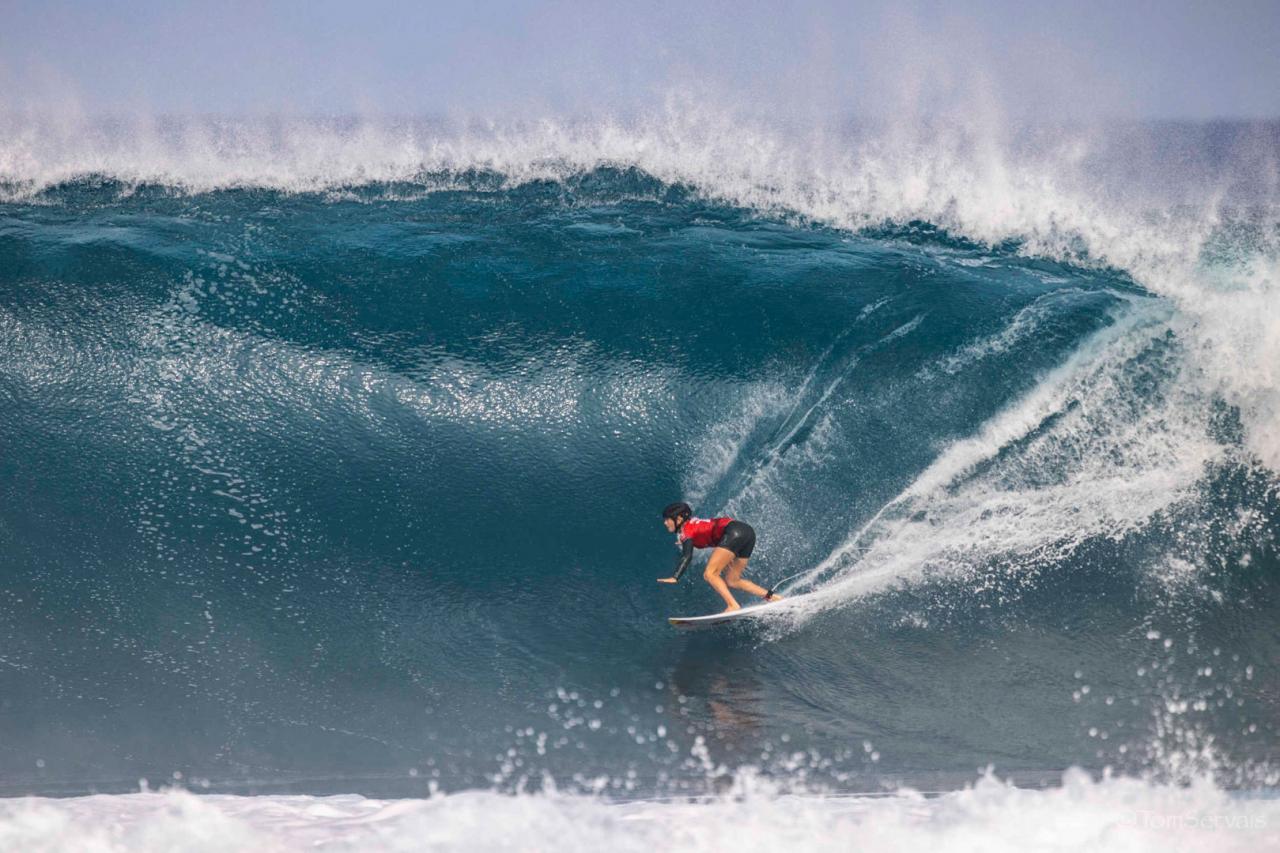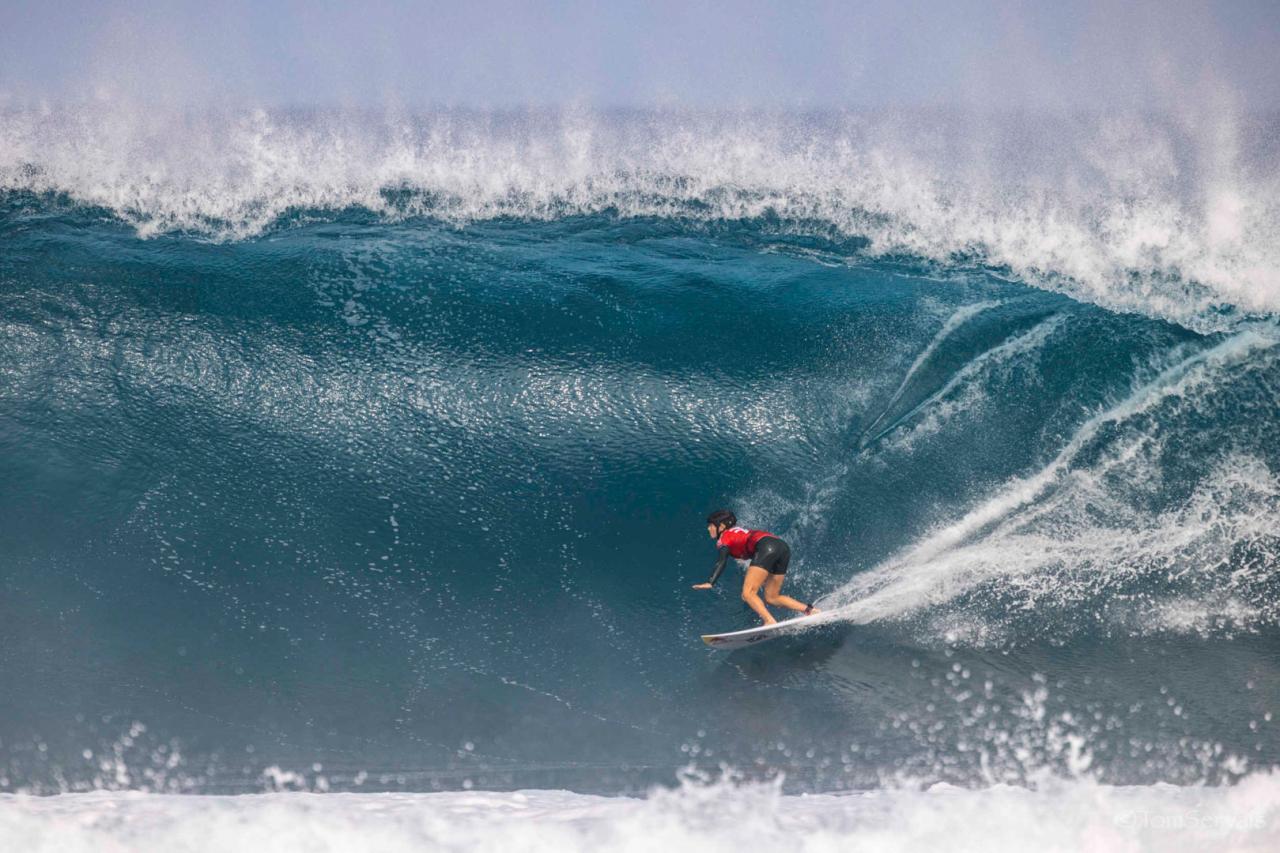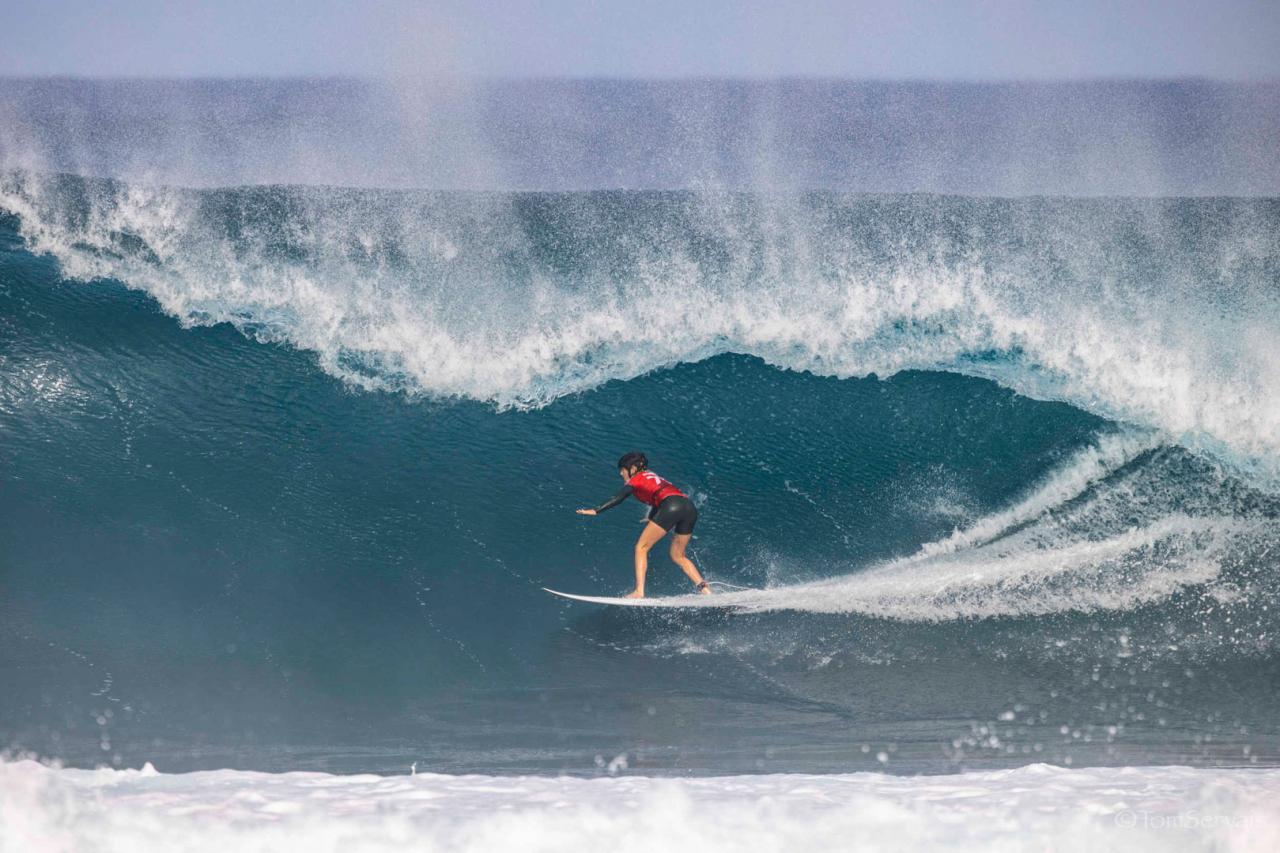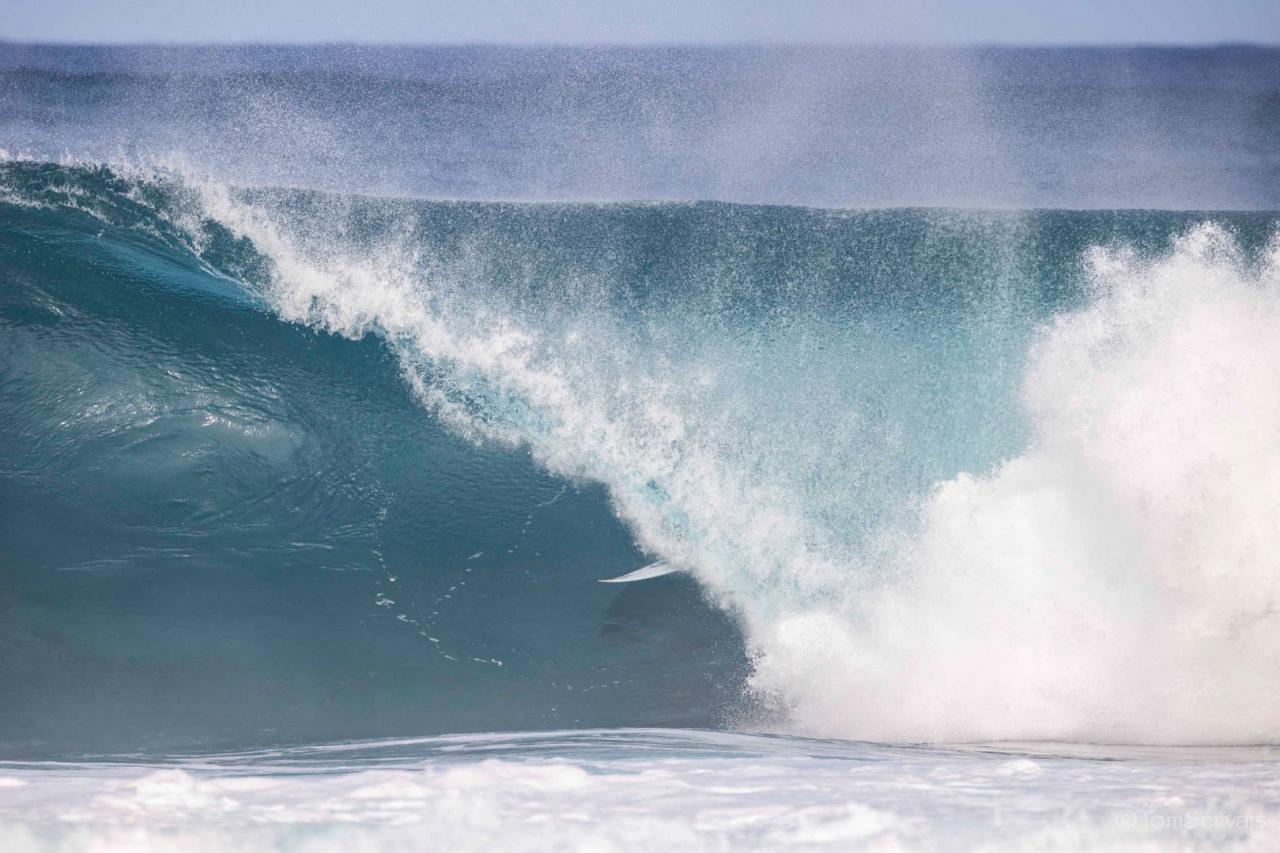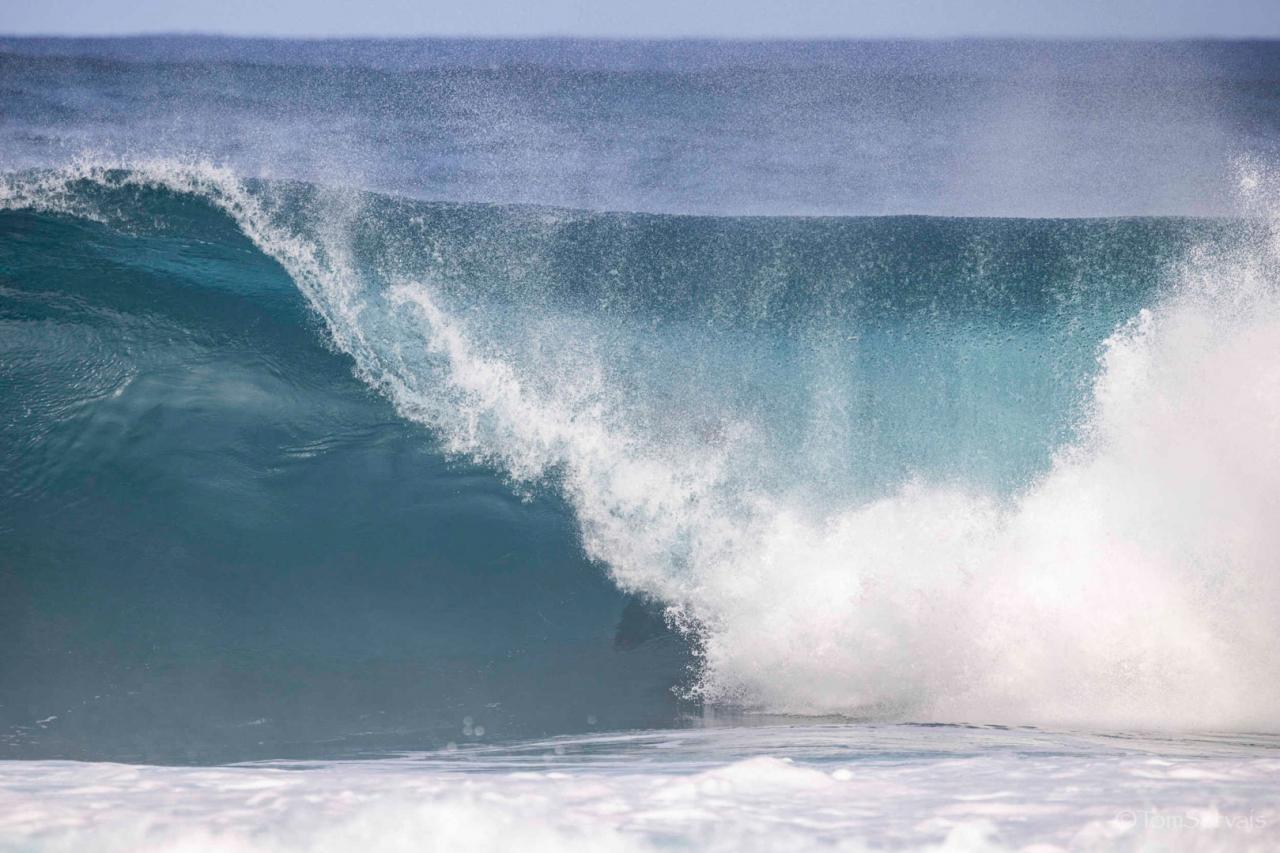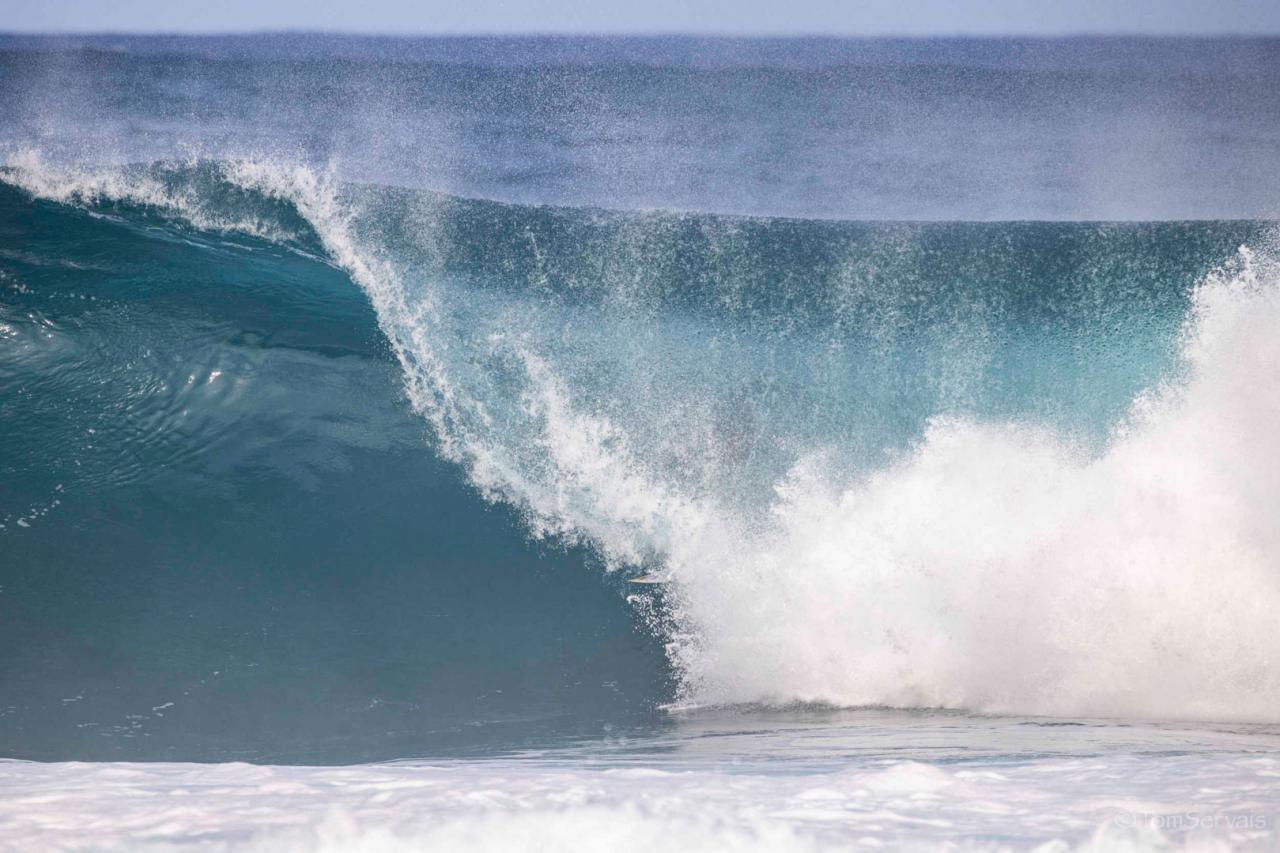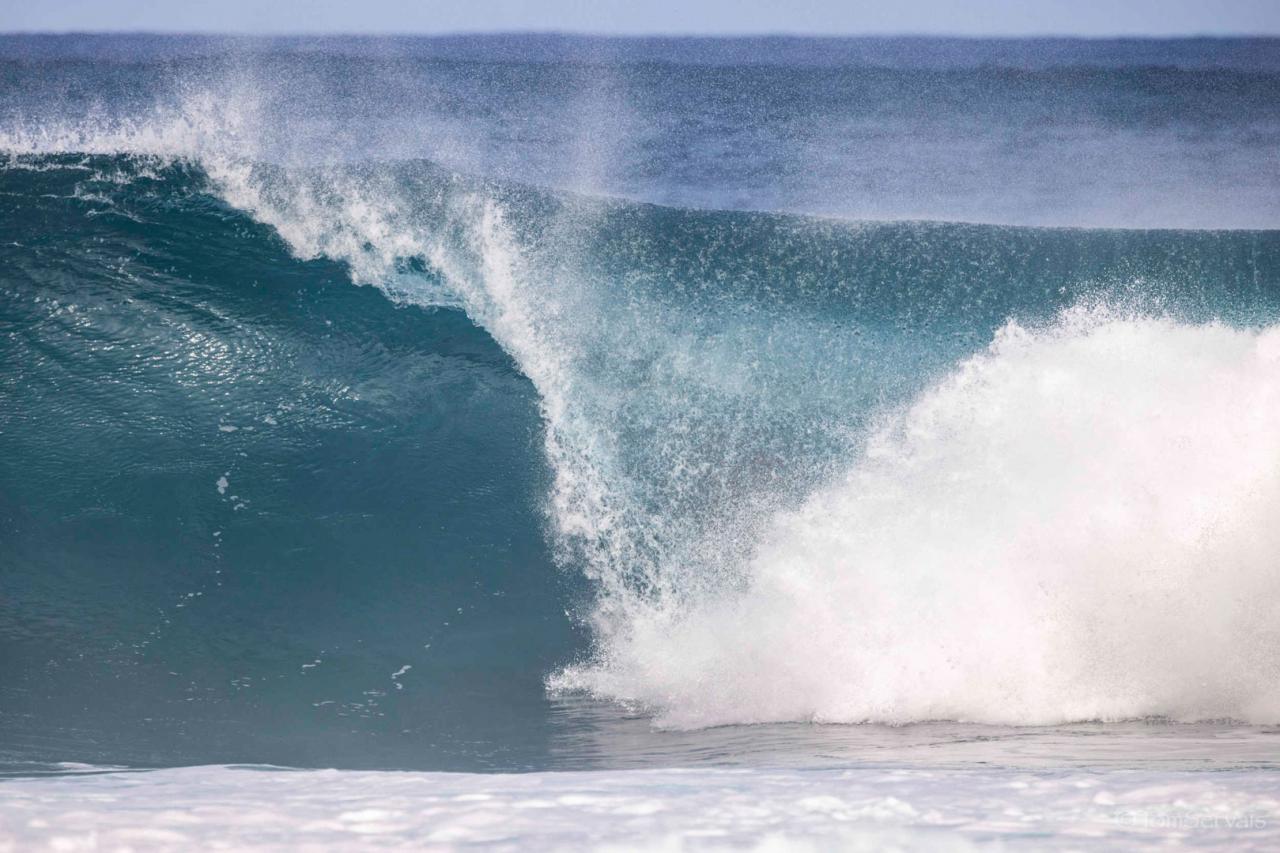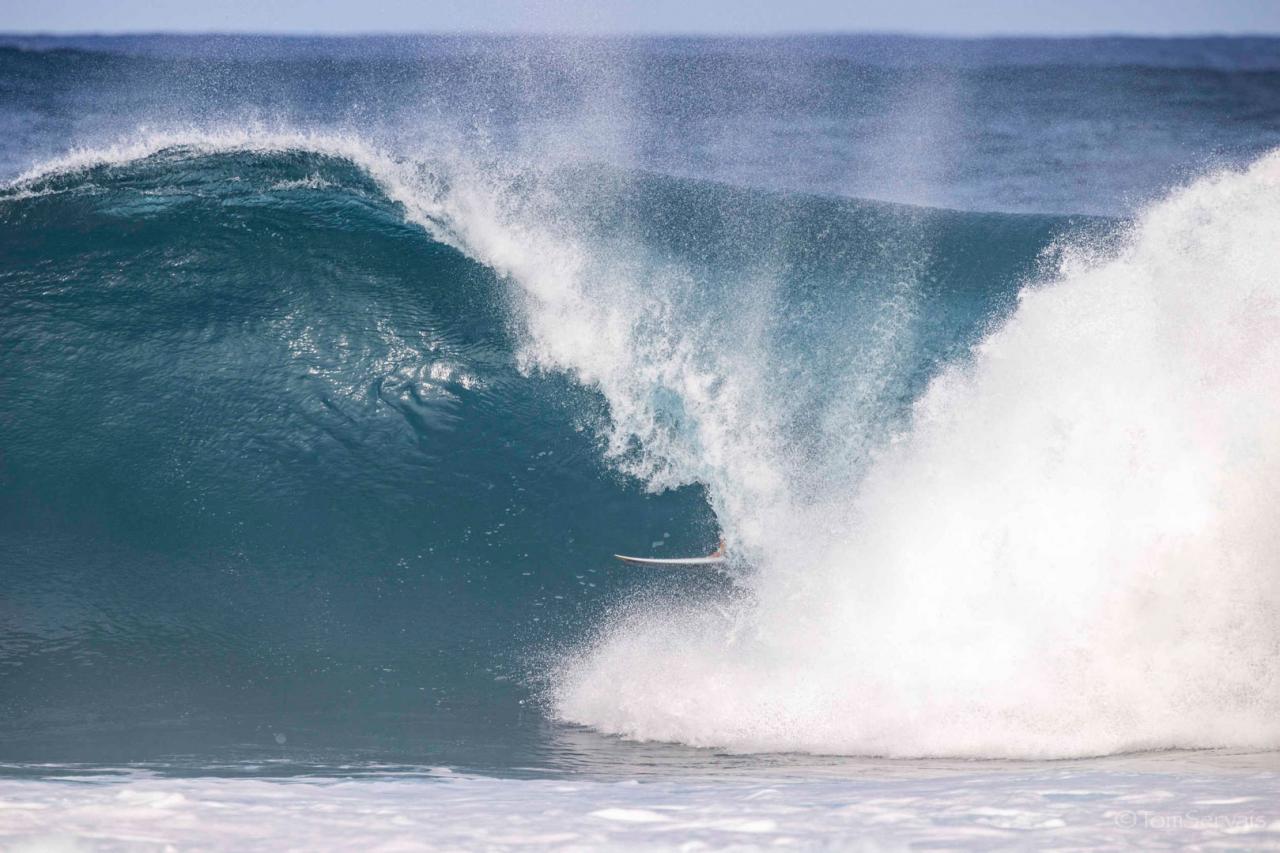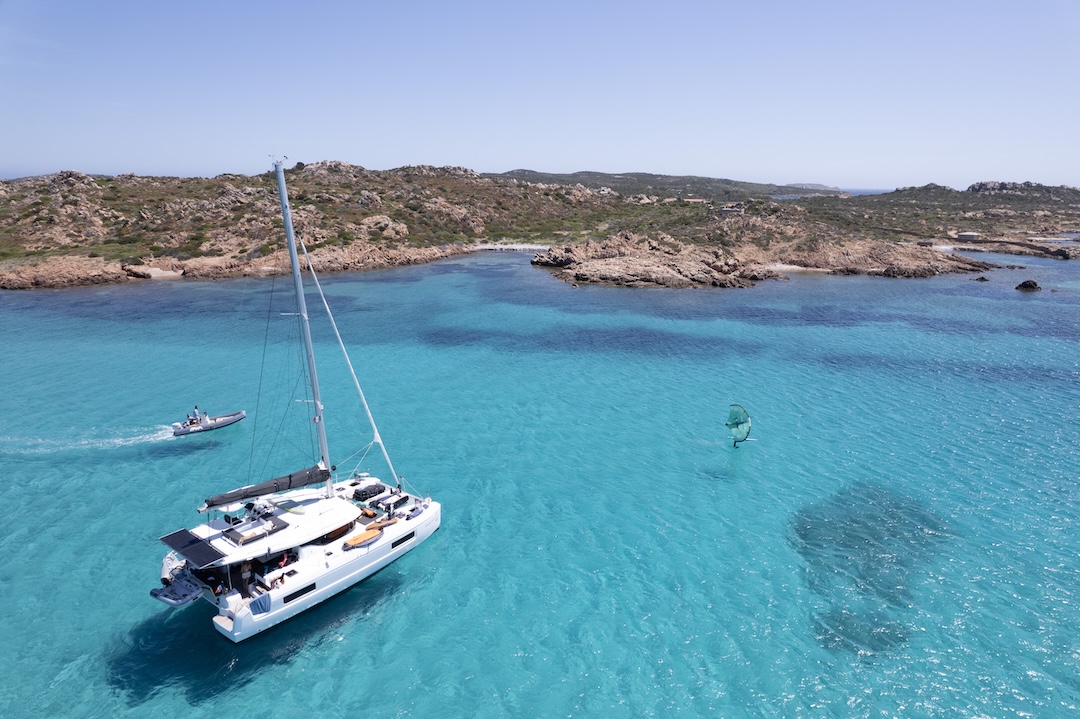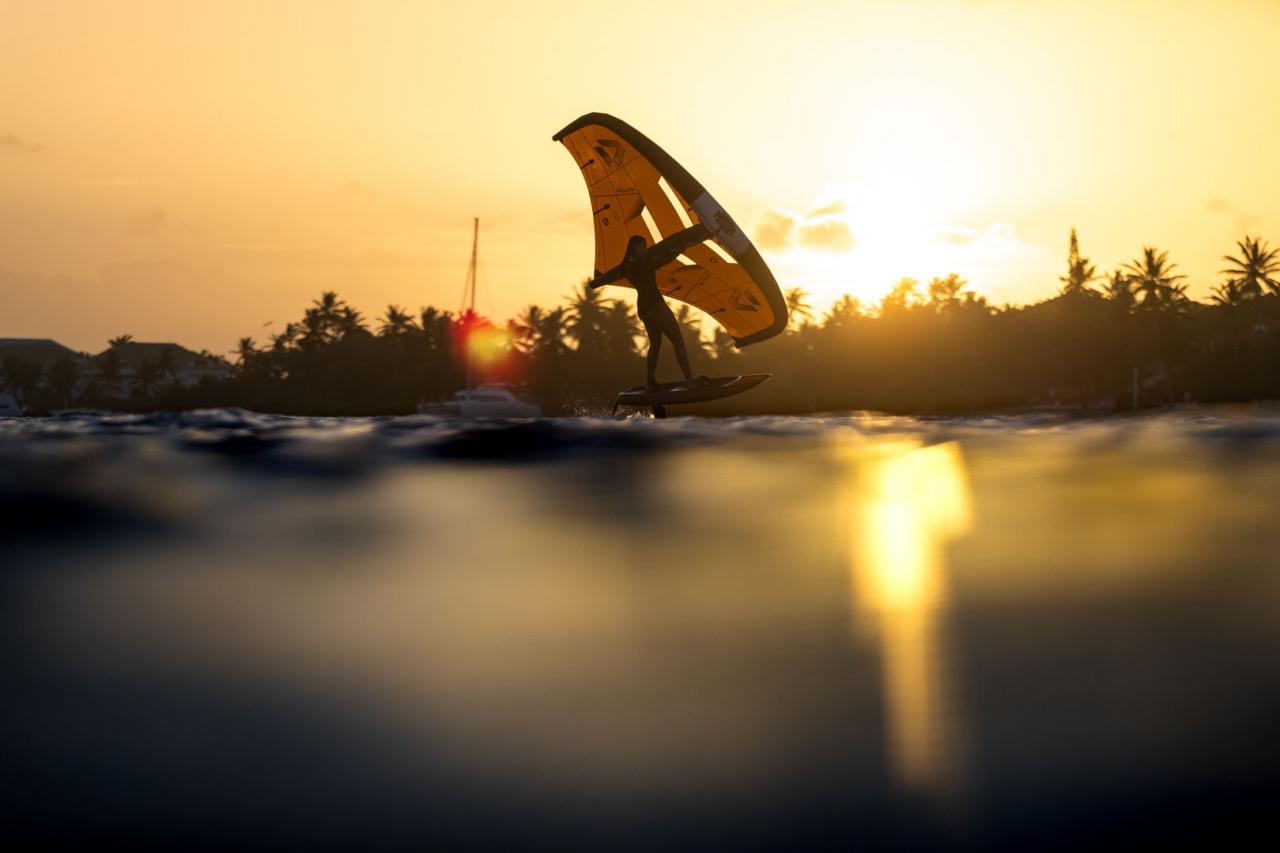It‘s 1:00 PM on a Monday in March. I jump on the bike and ride down to “the stadium“. Pipeline is in all her glory today, showcasing a spring swell with brutal winter force here on the North Shore of Oahu. The waves are unloading on the first reef. Pipe is alive and fierce, the wind is forceful in its gusts, and the ocean is stunning in between them. Wipeouts. Intensity. It‘s all out there today.
I’ve been watching with some friends on the beach for no longer than ten minutes when I hear, in sincere, ecstatic harmony, the guys around me exclaim “Pipeline is for the f**ing girls!” as we watch Moana Jones Wong get critically tubed and surf to a poised exit after the waves’ explosive spit. Moana rode that wave as well as anyone out there in her own beautiful, stylish way. I think to myself, “Yes! The stigma of being a woman in surfing is disappearing, and the boys are here for it!” Yet there are always certain key components that are crucial for survival, let alone success at Pipeline. This is not a place for under-preparedness. It takes tremendous dedication and skill for Pipeline to be ridden at size. There is no one better to tell the story about how that can be achieved than a legend herself, the woman who gave it her all to learn to ride that wave and pave the way for the next generation: Rochelle Ballard.
I had posters of Rochelle on my walls at home and in my binders at school when I was a teen. Around that time in the early 2000’s, Rochelle was already breaking boundaries by surfing heavy waves, making movies, and winning events, while simultaneously nurturing the global women’s surf culture. For years, she hosted an all-girls surf camp, making hundreds of surfer girl‘s dreams come true by giving them the chance to hang out and surf with their idol.
In 2009, I had an opportunity to work on Rochelle’s production of “Surf Into Yoga”, a DVD course for surfers. At that time, I had known Rochelle for a few years, but this was the first available opportunity we had to spend quality time around each other. Shortly after we began working on the project, a room became available at her property and my life path was henceforth forever been enhanced by Rochelle taking me under her wing.
For the next five winter seasons, this larger than life legend taught me all the important ins and outs of life, like how to cook, clean, compost, practice yoga, sample single-fins, and pull into barrels on the West Bowl at Sunset. She became like a big sister and - to this day - remains one of the most inspiring and impactful people in my life. As the years roll by, the more I cherish how much influence Rochelle has had on the sport of surfing and also the entirety of my life. She has also been impactful in addressing certain discrepancies the surf culture has had around honoring and recognizing the women who opened doors to lead the charge in women’s professional surfing.
Now it’s March of 2024, and I sit on her yoga deck alongside our mutual friend and big wave charger, Paige Alms. Paige and I act like students with their guru, hanging on to every word as Rochelle recounts her Pipeline stories. We want to know everything about her fantastic odyssey with the most dangerous wave in the world because, even though I’ve been a friend of Ro’s for nearly two decades, there are still so many details I haven't heard.
“Wasn’t it just amazing? I cried multiple times throughout that day,” recounts Rochelle when the 2024 Pipe Pro came up in the conversation. “And when Caity exclaimed ‘Pipeline is for the f***ing girls!’ into the mic, I was literally blown away. Finally!” Rochelle is so proud of the women’s performances that day, living up to what she knew was possible, even when the rest of the world didn’t see it.
But if the ‘rest of the world’ today knew Rochelle’s full story and had been able to witness the incredible waves she’s ridden, I wonder to myself if it still would have taken 20+ years for the evolution of women’s surf competition to bring us to where we finally are today? Today, where the divide between women’s and men’s surfing has been nearly dissolved for the first time as the women’s heats were run alongside the men’s pumping waves at the 2024 WSL Lexus Pipe Pro surf competition?
Perhaps. But still, listening to Rochelle’s story of learning to surf Pipeline makes me realize the most important elements of this culminating ‘new’ ability of women successfully charging Pipeline — elements where highly technical skill, burning desire, and utmost courage — finally met. It all began with the woman sitting in front of me. One cannot succeed at Pipeline without the help of others. And then, there is the all important catalyst: opportunity.
Rochelle was so impressed by the technical ability of the women in the water at the Lexus Pipe Pro. Caity Simmers, Molly Picklum, and Betty Lou Sakura Johnson all made history at Pipe that day. Each caught the best waves of her life, seizing the rarest of opportunities to surf perfect Pipeline and Backdoor in forever-to-be-remembered heats, smashing the stigma that Pipe “isn’t for girls” in the course of one dramatic day.
Caity said multiple times in her interviews during the event just how challenging it is to get a wave during a free-surf at the most iconic wave in the world. Her score of a 9 in the quarter finals was her first proper wave out there! However, considering her poise and execution, it looked like it could have been her thousandth, certainly not her first.
The similarities between Caity and Rochelle are wild. Both have been the smallest in stature on the tour, trailblazing by making their own movies. Both are fiends for the barrel and sport O’Neill stickers on their boards. Yet, each is so uniquely herself.
When Rochelle was in her late teens, she too was already charging tubes on her home island. She married Bill Ballard at nineteen and started surfing heavier waves with her goofy-footed, hard charging counterpart, along with Keala Kennelly, along with the two younger Irons Brothers, Andy and Bruce.
Rochelle remembers her first time she attempted to surf the only proper slab barreling left on the island. She remembers, “Surfer Magazine flew in for a photoshoot because they wanted to do a piece on Andy and Bruce. Keala and I were like, ‘We're gonna go too!’ The waves were firing. I was the first one out and I immediately dropped in, but I didn't know how to grab my rail yet. So I just dropped in, pulled in, and stood up in this heaving barrel. The thing closed out. It dumped me straight onto the reef and I hit my head and shredded my back. After that, I was like, “f*** Backdoor, it's so hard!”
Soon after, Rochelle got her massage license and she qualified for the ASP World Tour in 1992. She considered not joining the tour because it was (and still is) so expensive to travel to each of the different contests, and - back then - most of the events on tour were held in less-than-optimal waves. However, she and Bill agreed that Rochelle would regret it for the rest of her life if she didn’t give professional surfing a go. Thank goodness she did!
At twenty years old, she and Bill moved to the North Shore and Rochelle began to frequent the lineup at Backdoor and Off-the-Wall with filmmaker Larry Haynes and Betty Depilito, who encouraged her. They urged her because no other woman in the world could do what she was doing at that time, weaving through the treacherous forehand tubes.
“What about Pipeline?” I inquired.
“I wasn't looking at the left because it was just scary there and so hard, so once I started getting out to real Pipe, I was like, ‘Forget that wave!’ Everybody wanted to go left, so I charged what I could at Backdoor.”
“What’s so hard about going backside at Pipeline?” I asked.
She answered, “Reading that wave and being able to get under the lip when you're small and don't have the muscle mass and power to ride a bigger board or paddle in deep is treacherous. I'd be paddling for a wave and guys would just paddle right past me. I'd be like, ‘f***! Can somebody push me?!!!’”
“Was it hard for you to get waves at Backdoor, too?” Paige asked.
“Yeah, it was really hard,” Rochelle says. “I started getting barreled by pulling into the closeouts because nobody would let me on the better waves. Back then, the guys would always go and push me out of the way, or even take off right in front of me. I wasn’t able to get any decent waves out there. So I went on the under-the-reef waves that were shitty and would clamp. I'd hit the reef and get blown up.”
There’s an iconic clip of Rochelle in the first all-women's surf film ever made (by Rochelle and her husband, Bill Ballard), the OG 1998 film titled Blue Crush. In it, Rochelle drops in at Backdoor, gets burned by a guy, but continues to pump and drive through the barrel. As she comes barreling out of the long tube, the guy in front cuts back into her, wiping her out. All the while she was hooting at him to get off her wave. “He knew I was there,” she said. It made for a great film clip though, as it was the visual representation of “Backdoor is for the girls” too. But this happened twenty-five years ago.
The 1998 version of Blue Crush became an instant hit and catalyst for women’s surf culture. It was the first film to capture women on surf trips together, showcasing outstanding skills and entertaining personalities, even though surf films like this were all over the men’s space. Rochelle and Bill put their own money into producing that film. But, as Rochelle has done throughout her life, she was investing in the future. She didn’t want to succeed alone; she wanted all the women around her to succeed as well. After the launch of Blue Crush, women’s surf films would go on to make Rochelle, Lisa Anderson, Keala Kennelly, Megan Abubo, Serena Brooke and so many other women worldwide surfing sensations.
The women’s surfing industry in the late 1990s sky-rocketed due to this group of talented, hard charging females led, in large part, by Rochelle’s progression in the tube and her fierce dedication to creating media so the world could witness what women could do. The brands began minting off their likenesses while young girls like Paige Alms, Coco Ho, and Carissa Moore were watching what was possible. Caity, BL, and Molly, this year’s Pipe sensations, were still years from even being born.
Rochelle practiced her backhand tube riding skills in places like Indonesia, Tahiti, and Fiji, where there is a bit more critical time on the wave to practice posture, positioning, rail grabs, and pumps.
“First, I went to Teahupo’o. It was 5-6' foot surf, and Shane Dorian was out. I asked Shane, “How do you do this? I'm really scared but I want to understand how to do this.”
She remembers Shane told her, “Don't look down. Look at the boats.” Then, as Paige and I raptly listened that day, Rochelle began listing the crucial backhand tube tips Shane Dorian had shared with her. “Stay focused on the boats and you're gonna come out,” he told her. Then, she recalls he announced, “Here comes one!”
It was a solid six footer. Rochelle says her brain reacted, “F**!’ It’s now or never!” Shane encouraged her to, "Just dig deep, get under the lip and look at the boats!” She did.
She recalls, “I got drained and spat out and Shane shouted ‘There you go!’ That was the first time I properly got tubed on my backhand.”
“Next, Bill and I went on a boat trip to the Ments (Mentawai Islands)”, says Rochelle. All those lefts are so much easier to make than Pipe. I just kept surfing with the boys because they were the best barrel riders in the world. With guys like Andy, Shane and Bruce in the lineup, I asked them to give me pointers. I remember they just kept saying, ‘This is what you’ve got to do next,...You’re still chest down, open that knee up.’”
“Then Bill and I went to the ’99 OP boat trip event which was held at a fast and draining left and I just thought to myself, ‘How in the world do you make THAT?!!’ At that point, I was proficient at grabbing my rail but I couldn't move fast enough in the tube. Andy told me, ‘You gotta get up fast and pump, then get back down low and do this thing with your rail.’” Rochelle made a motion with her hands, imitating what Andy had shown her twenty-five years prior, riding the tube in her mind.
“They just kept giving me tips,” she remembers. “I practiced and I kept getting better and better at the technique until I knew it was on!”
At the turn of the millennium, Brian Grazer and John Stockwell, two successful Hollywood filmmakers, became interested in developing a story around a woman surfing on the North Shore. They visited Oahu to research the script and capture some footage in order to make a reel for their funding campaign. This led them to meet Rochelle and Keala — two North Shore barrel queens. They were often splitting the peak, leading the charge and the only women at that time interested in Pipeline and Backdoor.
Rochelle reflects back on that day, “Brian and John came to Pipe and they decided to go see what the stadium looked like. Then they asked me, ‘Can you just go out there for a second and just paddle over some waves? You don’t have to ride anything.’
“I don't know why, but all I had with me was a 6’0. But I said okay. I paddled out and it was a solid swell. It was breaking on the second reef. I paddled over a few waves and then I saw this good one. In my head I thought, ‘Oh, no! Now, I have to go.’
So I took off on my 6’0 and I had to jump from the top. After that, the producers were ecstatic. When I got back to shore, they said, ‘Oh, f*** yeah! We're doing this!’ (Rochelle makes a scared smiling face here).
She continues her memory of that day, “They were shouting, ‘Here's the story!’ They understood. After that, John Stockwell was calling me and Keala every day, building the script.”
The opening scene in the 2002 Hollywood Blue Crush blockbuster remake is of the main character wiping out and hitting her head on the reef. Does that story sound familiar?
The producers, at that time, needed a title for the film but couldn’t resist the name of Rochelle and Bill’s groundbreaking surf film from 1998. So the filmmakers purchased the license to the Blue Crush title and Rochelle agreed to be a stunt double for the lead role. The script of the 2002 version is based around a young woman overcoming her fear of surfing Pipeline at a women’s surf contest. Ro was the only woman in the world to make that footage happen. However, she still hadn’t successfully ridden a wave at Pipeline herself yet.
She says, “Blue Crush made me do it. I told myself I had to go left. What women really need is to be pushed into their next level by opportunities just like that. I didn't want to surf Pipe. I wanted to surf Backdoor because I was scared of hitting my head at Pipe again and getting hurt. But now, with the film on the line, I had to go for it.”
Rochelle was filming stunts for the movie every day for several weeks. Midway through production, while filming a surf collision scene, she took an unfortunate hard hit to her neck that turned out to be problematic.
“I remember Brock Little trying to pick me up out of the water. He said, ‘Give me your arm.’ But, I couldn’t move anything. So the rescue team had to jump in the water and pull me up on the ski. They air vac’d me out of there that day.”
“And you couldn't move for how long?" Paige asks.
Rochelle answers, "I couldn’t move for around twelve hours. The doctors call a football injury like that a 'stinger'. They strapped me down and I had to lie completely still for hours because if you move something, you can be permanently paralyzed. I was crying and tripping. But as soon as the doctor cleared me, I went back to work. I was in shcock for much of the rest of the film, I was still in so much pain.”
The waves during the film production were not ideal, especially for Pipeline which requires a westerly swell to do its big thing. If the swell has too much north in it, the wave becomes a huge closeout and simply does not work. The first west swell to come through during production happened immediately after Rochelle’s neck injury and she wasn’t able to surf yet. No other woman in the world at that time wanted any part of Pipeline except for Keala and Kate Skerritt, but they were already surfing as themselves in the movie. Rochelle had to sit on the sidelines as Noah Johnson wigged up, put on a bikini, and ‘got the hero shot’.
Soon after, Rochelle healed well enough to resume her active duties in the film and it was then that a solid northwest swell began to fill in. She knew this was the moment she’d been waiting for. She had to send it at Pipeline even though she was still in a considerable amount of pain.
Watching the b-roll footage of her stunts, I could see Rochelle’s journey to surf Pipeline come to a head that day. She wiped out SO HARD on her first two waves, not for lack of technique or hesitation, but because it looked like the fins disengaged and the long, thin board she was riding made it almost impossible to keep from poking. Micro-adjustments are what make or break a surfer at Pipe.
“I was so scared, but I knew I had to go for it,” she says of that day. “For myself, and for all of the females in the lineup. Besides that, I was sick of wiping out.” On the very next wave, Rochelle barely scrambled over the ledge, but she grabbed her rail in full commitment and vertically dropped into a Pipeline drainer. This time, she held on through the massive bottom turn compression, yanked against the rail as Andy had taught her, and flew up and out of the tube. That wave was the first time a woman had ever successfully made a backhand tube at Pipeline. Rochelle Ballard claimed her place in the annals of surfing history after years of committed preparation and practice. Beware of the wounded warrior, they say.
Rochelle continued surfing Pipeline after it all finally ‘clicked’ on that wave for her that historic day. There are only a few photos in evidence, but, like with many hard charging women’s best waves, Rochelle’s waves at Pipeline (and beyond) went largely undocumented and under-appreciated. Photos of her charging Pipe never made it into surf magazines, interestingly enough, even though it's the most published wave in surfing. Just not for women… yet.
Rochelle went on to lead the charge at pro surf events at Cloudbreak and Teahupo’o in the couple of years women’s divisions were held at those iconic breaks. This was before those same women’s surfing competitions got canned along with most of Rochelle’s sponsorships.
The Blue Crush storyline was twenty years ahead of its time. This year, at long last, a pro women’s division at Pipeline finally became a reality. While I wish I could have seen Rochelle compete at Pipe and Backdoor, her legacy has never been about being a champion at all costs. For her, part of her legend is about how her surfing has always been about raising the bar, envisioning the next level of what is possible, and helping other women get there too. Although the surf industry turned its back on Rochelle when she stopped competing, there is today a revival of women’s surf culture that appreciates the female legends like Rochelle and is making its way back into the mainstream. Credit must be given where it is due.
Since retiring from the World Surfing tour in 2007, Rochelle has cultivated her dreams of living a life close to nature, grounded in self-care, with a work hard/play hard mentality, and a heavenly gift for healing body work. She continues to offer private surf retreats on Kauai, opening up her personal oasis and lifetime of knowledge to share her experiences with others. You can find out more at SURFINTOYOGA.com. She also operates the Rochelle Ballard Surfing Experience at Nukumoi Surf Shop on the south side of Kauai, where beginner surfers have a fruitful start to their surfing journey. She is always Rochelle and still loves charging barrels while inspiring both women and girls to strive for their dreams with utmost determination and courage.
I don’t think it's been said nearly often enough, so I will leave you with this: Thank you, Rochelle!

